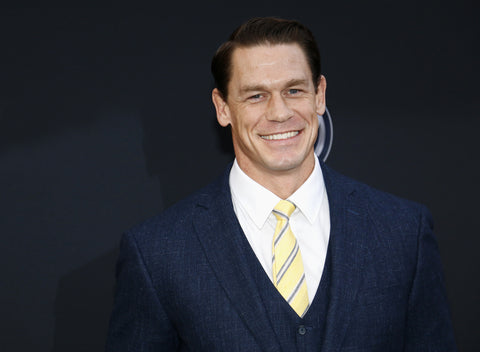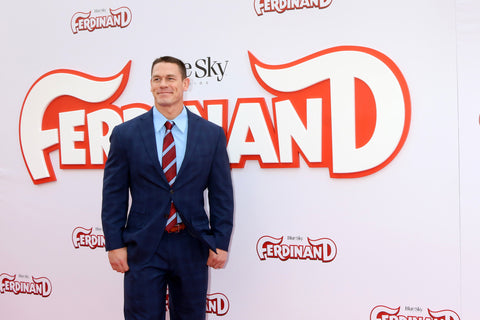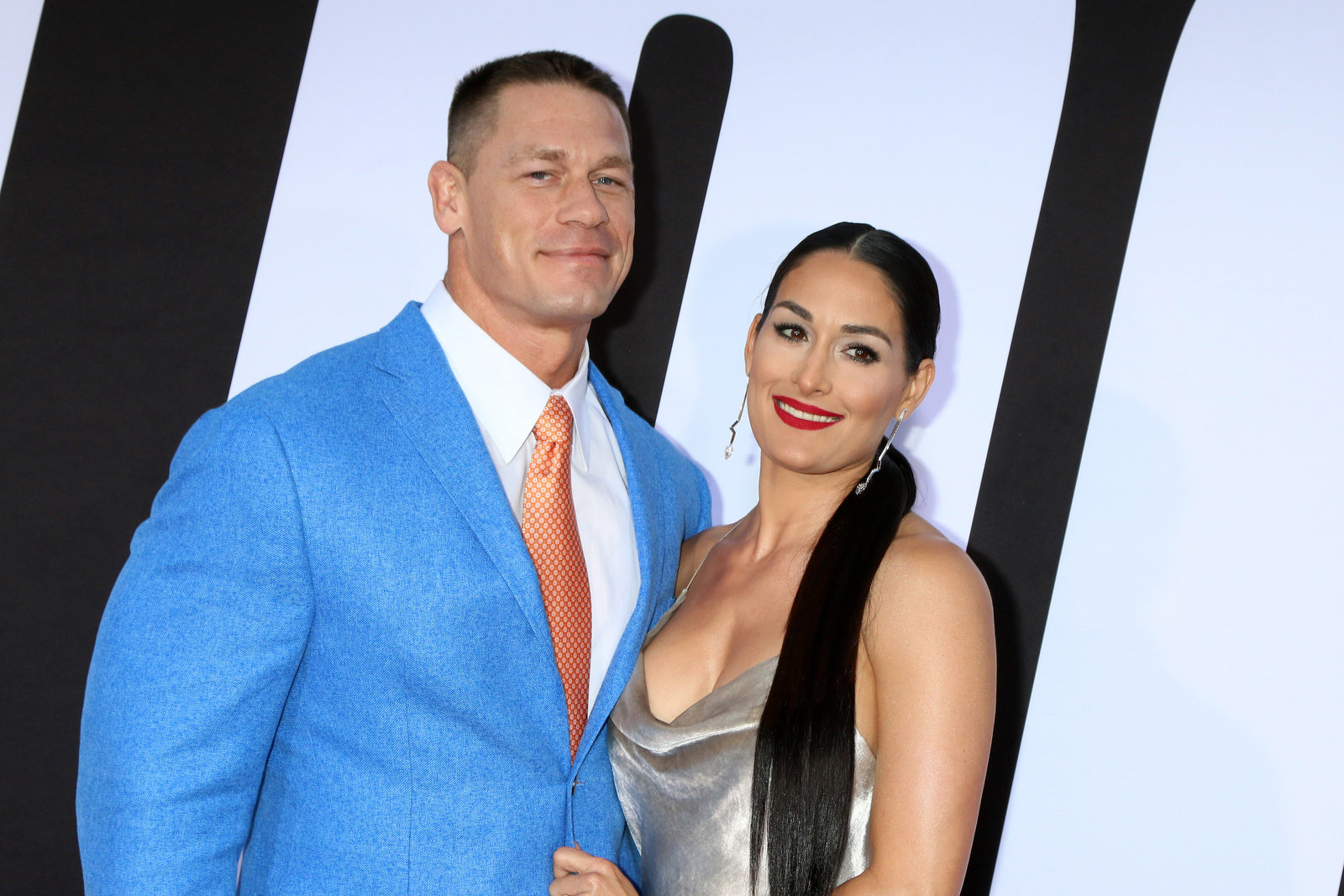

FREE SHIPPING AT $100
YOU'VE EARNED FREE SHIPPING!
FREE SHIPPING AT $100
YOU'VE EARNED FREE SHIPPING!
July 28, 2020 10 min read
Rapper, actor, television presenter, and last but definitely not least, professional wrestler. But calling him just a wrestler would be doing a disservice to the man and his fans.
Arguably the greatest professional wrestler of all time, John Cena has done it all, and he’s done it better than most.
A 16-time world champion (13 in the WWE), including 5 times as United States Champion and 4-time tag team champion, the man has done incredible things when it comes to his character work and promotional skills. That’s not even touching on his incredible work ethic and his charisma that has stretched much further than the WWE.
But what makes John Cena, John Cena? Other than the things we’ve mentioned above, it has a lot to do with how he takes care of his body.
He’s not the first wrestler we’ve looked at, but his workout regime and diet plan is definitely a worthy aspect of his character to not only take a look at but also emulate. And let’s be honest, who wouldn’t want to have his Superman-like qualities—and that’s saying nothing about his actual physique.
You might not be able to see him, but that doesn’t mean you can’t follow in his footsteps.
Cena received his first bench when he was only 12 years old, and in high school, he weighed a measly 120 pounds. Since that time, he’s doubled his weight and now stands at 6 feet.
He began his career in 1998 as a bodybuilder in California. The following year, he had his professional wrestling debut—a career that has spanned to this day.
With his bodybuilding background, a certain workout routine can be expected. Not only would he have been focusing on the main bodybuilding lifts, but he would have also done a higher amount of reps and sets with a significantly lesser load than his 1 rep max.
And we can see why this is the route he went for—his body looks fantastic. Not only is everything well-proportioned, but he looks ripped and lean as well. For something such as wrestling, we can see why looking good is the most important thing. Athleticism is obviously important as well, but it can usually take a backseat as long as a good benchmark is maintained.
Cena has, however, in recent years shifted away from that hypertrophic training that guided his routine in the early years. These days, the former bodybuilder opts for a more strength-focused routine. As opposed to hypertrophic training, strength training usually depends on lower reps and sets but counterbalanced with heavier loads.
It’s no wonder that Cena not only looks like a Greek statue of a god, but he’s also got the strength to back it up.

John Cena tends to do a 5-day split with 2 rest days during the week. He hits all the main body parts throughout the week.
An important thing to note is that he’s always trying to beat his 1-rep max every two weeks. This means he’s always loading on more and more weight, progressively overloading his muscles.
Furthermore, to get abs like his, the training routine also includes a single set of crunches after each day of training. How many? For Cena, it’s 60 of them in one set. If that sounds like a daunting task (like it does for us), then feel free to break up those 60 crunches into multiple sets, or do a smaller single set.
As always, remember to properly warm-up before workouts to avoid injury. The split that Cena works with looks like this:
Without further ado, let’s dive into Cena’s routine.
Seated Calf Raises: 10 sets of 10-20 reps
This exercise strengthens your calves, aids in your ankle strength and stability, and helps in preventing injuries in these areas. It’s a functional workout that’ll boost your athletic performance.
Standing Calf Raises: 4 Sets of Calf Raise of 25 reps
Although it sounds very similar to the seated calf raise, doing this exercise standing adds a whole ‘nother dimension to it. While the seated calf raise targets the muscle that’s closer to the bone, the standing calf raise will target the muscle that’s closest to the surface. If you want full, good looking thighs, you’ll need to do both movements.
Standing Single Leg Curl: 4 Sets of 20-25 reps
Leg curls primarily target the hamstrings, engaging them along with knee flexion. The great thing about leg curls is that they work the lower hamstring more than most other lower body exercises, including the Romanian deadlift.
Leg Press: 5 Sets of 20 reps
A functional workout, the leg press will not only improve your running speed but also your vertical. They’ll help you break through plateaus and build crazy quad strength while also engaging the glutes and hamstrings. If you want strong legs, the leg press is key to building well-rounded legs.
Leg Extension: 4 Sets of 15 reps
This movement is key when it comes to developing your quads. It specifically targets and strengthens the patellar ligament attachment to the knee, which helps both your quad and your knee joint at the same time.
Squat: 4 Sets of 10 reps
Squats are a bread-and-butter lift for a reason. You really can’t say enough good things about them. While considered a lower body exercise, they’ll strengthen your core as well, along with boosting your athletic ability, functional fitness, and being a terrific calorie burner.
Putting the bench on an incline of anywhere from 15 to 30 degrees, this movement will primarily work the upper pecs. While it’s key to developing a well-rounded chest (especially the upper part), this movement will also engage your shoulders to a high degree. The fact that you’ll be using a machine means that you won’t be needing as many stabilizer muscles.
Incline Bench Press: 3-4 sets of 20 reps
Similar to the exercise above, not using a machine for this movement means that you’ll need to engage more of your stabilizers—even the core. While this might mean you won’t be able to press as much weight, it will give a better-rounded development.
Pec Deck: 3-4 sets of 15 reps
The pec deck is a great tool to use for doing a well-rounded training of your pectoralis major. This exercise allows for a pec movement that’s not really possible with other lifts because of the range of motion and the angle.
Cable Crossovers: 3-4 sets of 15 reps
Also working your pecs, the major benefit of cable crossovers is that they use cables. With traditional free weights, the movement is often affected by momentum and elasticity in the muscles, which aids in the lift. But with cables, there’s a continuous resistance which is more effective in building muscles while also engaging stabilizers.
Bench Press: 3 sets of 10 reps
The classic bench press, much like the squat, is an amazing predictor of muscular strength. Unlike the squat, however, the bench press is a predictor of upper body strength. If you want big pecs and a shredded upper body, the bench press is a must in your training routine.
Preacher Curl: 5 sets of 12 reps
While it’s similar to a conventional bicep curl, the preacher curl comes with its own unique benefits that make it a worthwhile exercise to do. Of the biggest of these benefits is that it forces you to focus on the negative movement which improves both muscle growth and increases strength.
Standing Barbell Curl: 3 sets of 10-12 reps
Not only will this exercise give you bigger biceps, but you’ll also improve your grip strength, prevent injury to the elbows and arms, increase your upper body mass, and help your general and functional fitness. Doing these while standing will engage more stabilizing muscles, including your core.
Seated Dumbbell Curl: 3 sets of 10-12 reps
While working the same muscle group as the standing barbell curl, using dumbbells adds a necessary twist to the movement. Since you can only do the movement with one side working alone, it forces your body to develop equally on both sides rather than having your stronger side make up for the weaker. Doing these seated will allow you to use greater weights.
Standing Cable Curl: 3 sets of 12 reps
Another bicep exercise, this movement targets the muscle that bends your elbow and rotates your forearm. Your forearm muscles will also see greater engagement and even your core since you’ll need to be stabilized while standing. And of course, the use of the cable will add continuous resistance into the mix.
Rope Pressdown: 3 sets of 20 reps
A terrific tricep movement, the rope pushdown engages your muscle when your arms are in a locked position. The fact that there’s shoulder extension in this exercise means that the long head (the aesthetic part) of your tricep will be focused on.
Single Arm Cable Pushdown: 3 sets of 10 reps
Another unilateral movement, using a single arm will force you to use both sides of your body equally. Since your stronger side won’t be able to make up for your weaker arm, the weaker side will be forced to develop on its own and catch up in strength.
Lying Tricep Extension: 6 sets to failure
This is one of the best movements to do in order to engage the entire triceps. It effectively works your triceps all the way from your elbow to the lats. Your stabilizers will also be engaged since you’ll be lying down.
Overhead EZ Bar Extension: 3 sets of 20 reps
Another isolation movement targeting the triceps, the overhead positioning in this exercise will primarily target the longest head of the tricep. Using an EZ bar will be more comfortable than using a barbell.
Seated Barbell Tricep Extension: 3 sets of 20 reps
The benefit of this exercise is that you’ll be using a barbell and you’ll be seated, so you’ll effectively be able to lift a higher load with your muscles.
Tricep Dip: 4 sets to failure
This is a terrific movement not just for your triceps, but also for your chest, shoulders, and back muscles. Furthermore, your core will also be activated since you’ll need it for stabilization.
Rear Delt Cable Flyes: 5 sets of 20 reps
This exercise will isolate your delts, strengthening your shoulders, and improving your posture. All of this combined will improve your physique’s aesthetics, and help to turn heads next time you hit the beach.
Machine Overhead Press: 5 sets of 20 reps
While primarily dealing with the strength and size of your front and mid-shoulder muscles, the machine overhead press will also activate your triceps, traps, and obliques. Using a machine will allow for controlled reps and a stricter form.
Machine Lateral Raise: 5 sets of 20 reps
Not only engaging your shoulders, but this movement will also help with shoulder mobility, and with proper core activation—your whole body will reap the benefits.
Seated Overhead Press: 3 sets of 10 reps
Similar to the tricep exercises, this movement will hit those along with your shoulders, traps, and core muscles. Although the seated variety will engage less of your stabilizers.
Dumbbell Lateral Raise: 3 sets of 12 reps
Activating similar muscles to the machine lateral raise, using dumbbells instead will make this a unilateral exercise and force both of your sides to develop equally.
Military Press: 3 sets of 10 reps
This movement is one of the best for developing almost every muscle group in your body, but it’s a key for great-looking shoulders. Other muscle groups that benefit are the chest, triceps, core, and even the glutes, biceps, and lats.
Lat Pulldown: 5 sets of 20 reps
As its name suggests, this exercise primarily targets the latissimus dorsi. This in turn promotes spinal stability and amazing posture.
Barbell Row: 5 sets of 12 – 20 reps
While great for your back, barbell rows provide full-body benefits since they’re a compound exercise. These are one of the most effective exercises you can do if you want to improve your squat, bench press, and deadlift.
One Arm Dumbbell Row: 5 sets of 12-20 reps
Similar to the barbell row, the dumbbell row has the added benefit of being a unilateral exercise—helping to develop each side of your body equally. However, you definitely won’t be able to use as much weight with this movement.
Deadlift: 4 sets of 8-15 reps
What isn’t the deadlift good for? Another bread-and-butter lift, this is the move you want to do for that explosive athletic energy.
High Pulls: 4 sets of 20 reps
This exercise involves all of your body’s major muscle groups, including the posterior chain (used to stabilize during the movement), and the upper, mid, and lower traps.
Pull-ups: 4 sets to failure
One of the best bodyweight exercises one can day, the pull-up is a terrific movement to add to your workout routine. Along with training your back, your grip strength and overall body strength will see improvements as well.
Barbell Shrug: 4 sets of 20 reps
This movement primarily targets the upper back muscles, along with your back delts and neck. This is a great exercise to do if you’re looking to improve your posture and build your traps.

Well, that’s a lot of exercise for one week—which makes sense when you look at Cena. Nevertheless, along with a lot of rest, there has to be a way for the man to have enough fuel to not only keep his muscle mass but build muscle as well.
And fuel himself he does.
With an average of 7 meals a day, Cena most likely spends the same amount of time (if not more) eating as he does working out in the gym. Below is just a glimpse of what a day in the Cena kitchen might look like:
As it becomes obvious looking through the above diet plan, Cena really backs up his training with a super clean diet. And it makes sense, working out is just a single piece in the puzzle. Hard work won’t get us as far as Cena has gone without a strong base of both resting and healthy eating.
Get enough muscle-building protein, exercise, and sleep, and you may one day be a WWE superstar as well.
